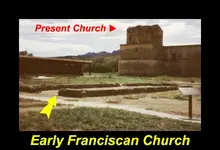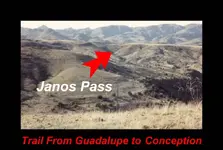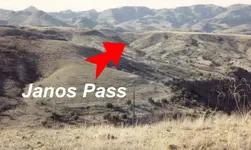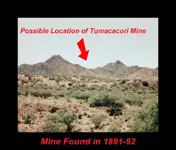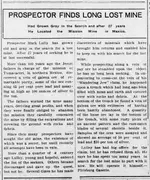Interesting posts, thank you for them. I don't see much to address, however maybe I can shed some light on this Virgin de Guadelupe.
The Virgin of Guadelupe story is fairly well known, an interesting story in itself, a fair example from Britannica;
Our Lady of Guadalupe (patron saint of Mexico) -- Encyclopedia Britannica
What the various articles about this religious figure do not explain however is that the lady of Guadelupe somehow came to be venerated as the patron saint or goddess of mines and mining to many Mexicans. It was not unusual for Mexican miners to erect a small "temple" to her near the entrance of mines, or even deep inside, where the miners would ask for her blessing and for success in their mining endeavor.
<from Geology and Quicksilver Deposits of the New Almaden District Santa Clara County California By EDGAR H BAILEY and DONALD L EVERHART, US Geological Survey Professional Paper 360, pp 181, published 1964>
This reverence for the Lady of Guadelupe became very widespread in Mexico and of course extending into the American southwest.
<Woman's Work for Woman and our Mission Field, vol 4, pp 61>
It was also commonplace for miners to dedicate a tithe of their income from mining to the Virgin, as a sort of payment for the blessing and success. This leads me to the speculation part.
It is quite possible that the Virgin of Guadelupe "mine" was never intended as an actual mine but as a place to pay reverence to the Virgin and deposit the tithes (tenths) of the riches obtained. This shrine would likely be 'managed' by the padres, perhaps even leading the miners in prayers, and of course the need to conceal the wealth of the Virgin when events overtook the Jesuits in Spanish colonial America. If this speculation is true, then the amounts of silver and gold actually mined would be ten times what is listed on the Molina document, though where it may be today is anyone's guess.
Another possible speculation is that the Virgin of Guadelupe mine was indeed a mine at first, but the ore or native metals simply played out, leaving large empty mine workings which then became used as a sort of shrine and storage vault for treasure of the church. I have not seen any trace of what I could recognize as ore in the area Mike is referring to, although perhaps I simply did not recognize it as that was decades ago and I have learned a bit since. I am not convinced that is the location of the Virgin de Guadelupe but it is as good a guess as any.
Anyway hopefully this helps explain how/why this "mine" probably never was a mine but a shrine, where treasure would be stored belonging to the Virgin in the eyes of the Indians but "managed" by the padres as "agents" for God.
Oroblanco






